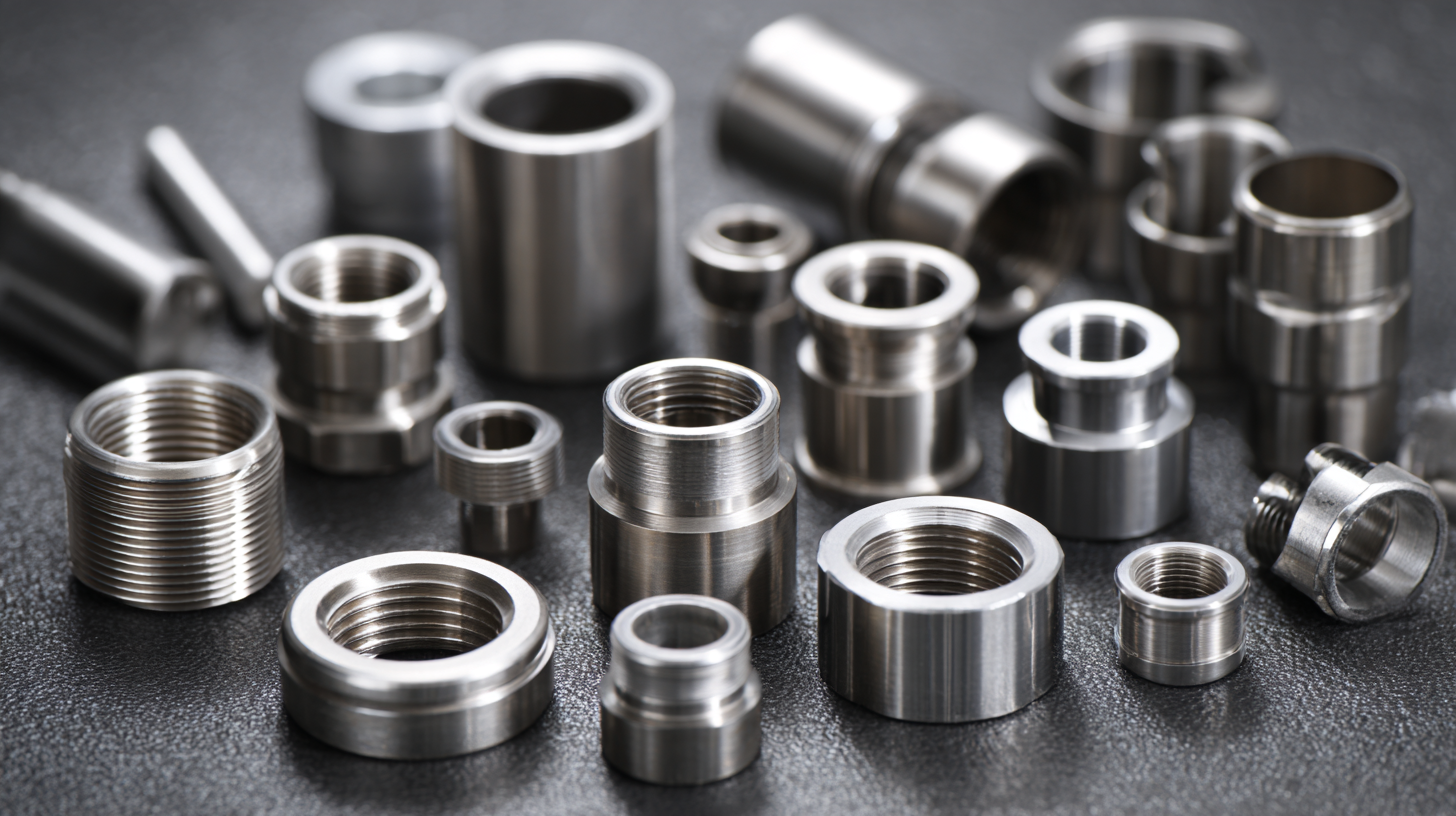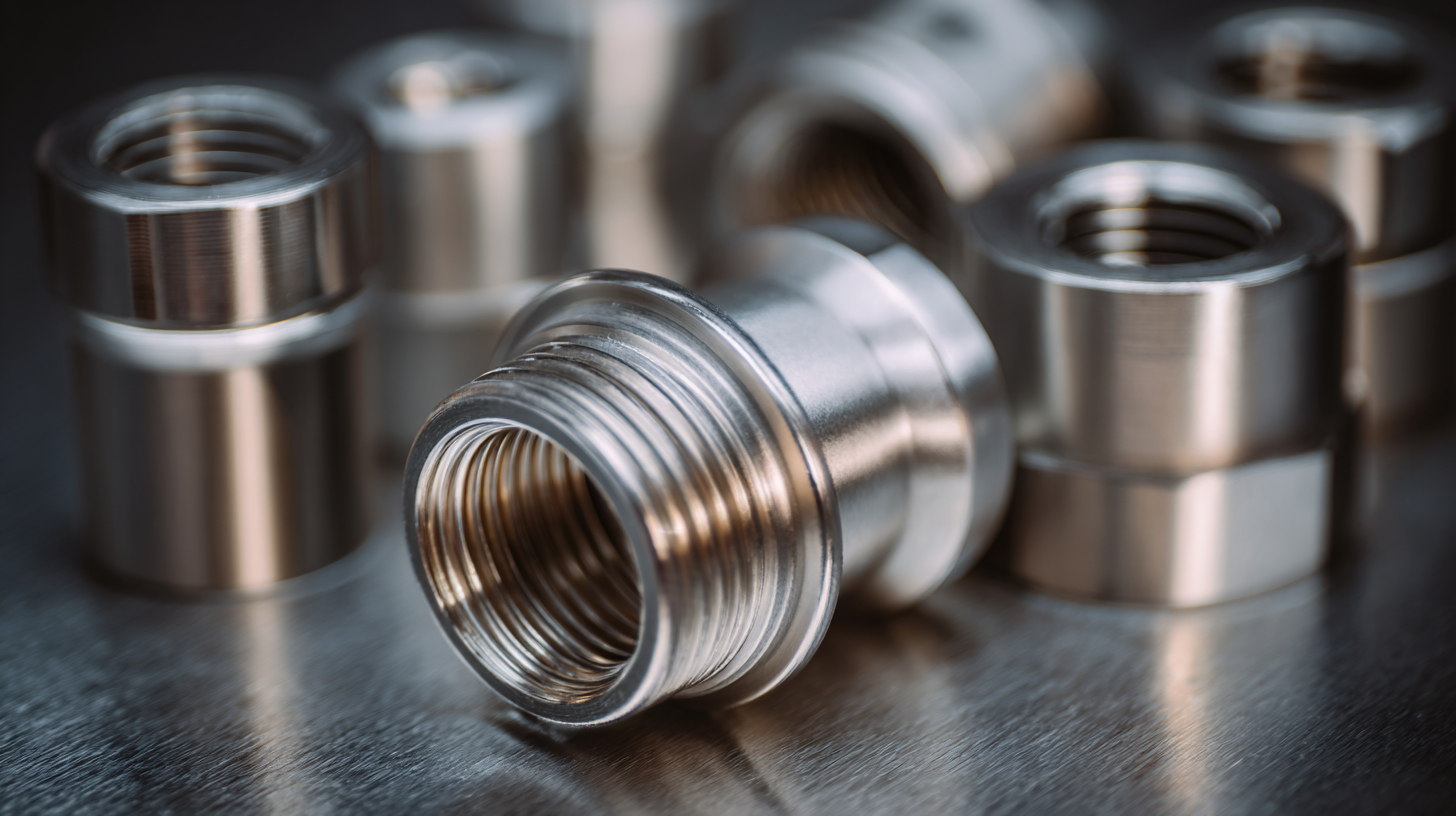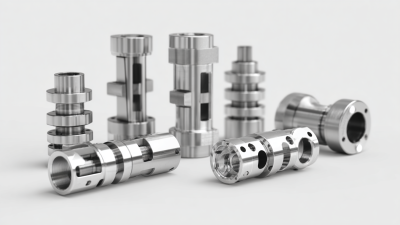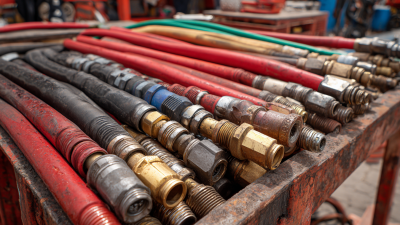When it comes to selecting the right components for your piping and plumbing projects, understanding the various types of stainless steel fittings is crucial. The global stainless steel fittings market is projected to reach a staggering $10.2 billion by 2026, driven by rising demand in sectors such as oil and gas, water treatment, and construction.

Stainless steel fittings are renowned for their durability, corrosion resistance, and ability to withstand high temperatures, making them a preferred choice among engineers and contractors. According to a recent report by MarketsandMarkets, the increasing adoption of stainless steel in applications requiring high performance and reliability is expected to propel this market.
However, with a multitude of options available, choosing the right fittings can be overwhelming. This guide will provide essential insights and criteria to help you make informed decisions tailored to your specific project needs.
When selecting stainless steel fittings for a project, understanding the different grades of stainless steel is crucial. Stainless steel is categorized primarily into several grades, each with its own unique properties and applications. The 200 series is known for its resistance to corrosion and affordability, while the 300 series, which includes 304 and 316 grades, is highly regarded for its excellent corrosion resistance and formability. These characteristics make the 300 series a popular choice in industries such as food processing and pharmaceuticals.
Moreover, gradually, the duplex stainless steel options are gaining traction due to their superior strength and resistance to pitting and crevice corrosion. As the market for seamless pipes is projected to reach USD 5.15 billion by 2030, discerning the appropriate grade for your fittings is pivotal not only for ensuring durability but also for optimizing costs and performance. Engaging with the right grade of stainless steel can significantly impact your project's success, especially in environments that demand high corrosion resistance and mechanical strength.
When it comes to construction projects, selecting the right materials is crucial for ensuring durability and efficiency. Stainless steel fittings are an exceptional choice due to their numerous advantages. Firstly, one of the most significant benefits is their corrosion resistance. Unlike other metals, stainless steel resists rust and tarnishing, making it ideal for projects exposed to harsh weather conditions or moisture. This property extends the lifespan of the fittings, resulting in fewer replacements and repairs over time.
Another notable advantage is the strength and durability of stainless steel fittings. They can withstand significant pressure and are less likely to deform under stress, which is essential in construction environments. This inherent strength contributes to the overall safety and reliability of the structures built with them. Additionally, stainless steel has a sleek finish that aesthetic appeal, making it suitable for both visible and hidden applications.
**Tips:** When choosing stainless steel fittings, consider the grade of stainless steel that best suits your project; higher grades may offer better corrosion resistance for specific environments. Also, ensure compatibility with other materials to prevent galvanic corrosion. Lastly, source your fittings from reputable suppliers to guarantee quality and performance.
| Benefit | Description | Use Case |
|---|---|---|
| Corrosion Resistance | Stainless steel fittings resist rust and corrosion, making them ideal for tough environments. | Marine applications, outdoor installations |
| Durability | They withstand high pressure and temperature, providing longevity in construction. | High-pressure piping systems, HVAC |
| Low Maintenance | Require minimal upkeep compared to other materials, reducing maintenance costs. | Industrial facilities, commercial buildings |
| Aesthetic Appeal | Stainless steel fittings have a modern and clean look that enhances the overall design. | Architectural applications, decorative structures |
| Recyclability | Easily recyclable, making them an environmentally friendly choice in construction. | Green building projects, sustainable construction |
When selecting stainless steel fittings for your project, understanding the importance of sizing and dimensions is crucial. The fittings must align perfectly with the piping system they are designed for, as mismatched sizes can lead to leaks, decreased efficiency, and ultimately, project delays. Begin by identifying the nominal pipe size (NPS) you are working with, which will guide you in choosing fittings that match the diameter and pressure requirements of your system. Ensure you are familiar with both the diameter and the wall thickness of your pipes, as these factors will influence your selection.
Additionally, it is essential to consider the type of connection needed—whether it be threaded, welded, or flanged fittings, each has specific dimensional standards that must be adhered to. Pay attention to the specifications set by organizations such as the American National Standards Institute (ANSI) or the International Organization for Standardization (ISO). These standards ensure that the fittings will function well under various conditions and pressures. By taking the time to precisely measure and understand these dimensions, you can avoid costly mistakes and ensure a seamless integration of your stainless steel fittings into your project.

When selecting stainless steel fittings for your project, it’s crucial to avoid some common pitfalls that can lead to costly mistakes. One of the primary errors is overlooking compatibility with other materials. Ensure that the stainless steel you choose is suitable for the fluids or gases it will transport, as certain combinations can lead to corrosion or degradation.
Another common mistake is failing to assess the specifications of the fittings, such as pressure ratings or temperature tolerances. Choosing fittings that do not meet the demands of your application can compromise safety and performance. Always double-check the requirements and ensure that the fittings can handle the conditions they will face.
**Tip:** Always consult the manufacturer's guidelines for detailed specifications of the fittings to guarantee they meet your project’s needs.
Lastly, many forget to consider the environmental conditions where the fittings will be used. Exposure to harsh environments can affect the longevity of the fittings. Selecting the right grade of stainless steel that can withstand these conditions is essential for ensuring durability.
**Tip:** Conduct an environmental assessment before making your final selection to choose the most appropriate grade of stainless steel fitting.
When selecting stainless steel fittings for your project, it's essential to avoid common mistakes. The following chart illustrates the typical issues faced by professionals when choosing fittings, based on a recent survey.
When selecting stainless steel fittings for your next project, the finish is a critical factor that influences both performance and aesthetics. Research indicates that approximately 70% of buyers prioritize appearance alongside functionality when choosing fittings. The type of finish—be it polished, brushed, or matte—can significantly change how the fittings interact with their environment, particularly in terms of corrosion resistance and maintenance requirements. For instance, polished finishes might offer a sleek look but could be more susceptible to fingerprints and scratches compared to brushed finishes, which can mask imperfections more effectively.
Moreover, the choice of finish affects not only the visual appeal but also the long-term performance of the fittings. According to a comprehensive industry report, fittings with a superior finish can enhance longevity by up to 50% in harsh environments. This is particularly important in applications where aesthetics can impact branding, such as in architectural projects or high-end installations. Therefore, understanding the nuances of each finish involved in stainless steel fittings is essential for achieving both desired aesthetics and optimal performance in your projects.






